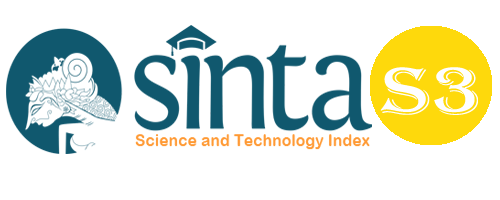Defense Strategy of Wakatobi Language Sikka Island in the Tourism Destination Area (A Sociolinguistic Study)
Abstract
Language defense can be realized if the spoken community continues to use that language in the realm of communication, even though there is a realm of using other languages in the interaction of multilingual communities. This study aims to describe the strategy for maintaining the Wakatobi language in the Sikka Archipelago in the Kojadoi Tourism Destination Area. This research method is a qualitative descriptive method. The research data was collected using observation, interview, documentation, and questionnaire methods. The data analysis technique in this research is discourse analysis technique. Based on research data regarding the strategy for maintaining the Wakatobi Language in the Kojadoi Tourism Destination Area, it can be argued that the strategy for maintaining the Wakatobi Language in the Kojadoi Tourism Destination Area includes: 1) Intensification of the function of language as an inter-ethnic communication tool, 2) Integration of Language and Culture, 3) Government Program and Service Policies, 4) Use of language in various domains of communication.
Keywords
Full Text:
PDFReferences
Sumarsono. 2012. Sosiolinguistik. Yogjakarta: Sabda.
Sumarsono. 1993. Pemertahanan Bahasa Melayu Loloan di Bali. Disertasi Universitas Indonesia. Jakarta: Pusat Pembinaan dan Pengembangan Bahasa
Hamid, Abdul dan Mboka, Idris. 2021. Isolect Language Status of Wakatobi Language in the Sikka Islands (A Dialectological Study). Birci-Journal. Volume 4 (4). Page 8397-8407.
Jannah, Afifatul dkk. 2016. “Pemertahanan Bahasa Using di Desa Biting Kecamatan Arjasa Kebupaten Jember (Kajian Sosiolinguistik). Jember: Universitas Jendral Sudirman.
Malabar, Sayana. 2015. Sosiolinguistik. Gorontalo: Idea Publising 6. Sumarsono dan Partana, P. 2004. Sosiolinguistik. Yogyakarta. Sabda.
Nababan, P.W.J. 1984. Sosiolinguistik Suatu Pengantar. Jakarta: PT. Gramedia Pustaka Utama
Kridalaksana, Harimurti. 2001. Kamus Linguistik, Edisi Ketiga. Jakarta: PT. Gramedia Pustaka Utama.
Sofiana, Aprina Puput dan Rahayu, Ida. 2013. Language Maintenance and Shift. (Online) (http://nurhidayati012.blogspot.co.id/2015/03/jurnal-review.html).Diakses 27 Januari 2022).
Nurhayati, Endang dkk. 2013. Strategi Pemertahanan Bahasa Jawa di Provinsi Daerah Istimewa Yogyakarta. Litera: Jurnal Penelitian Bahasa, Sastra, dan Pengajaran. Volume 12 (1). Halaman 159-166.
Susiati, S & Iye, R. 2020. Dialektometri Segitiga: Hubungan Kekerabatan Bahasa Di Sulawesi Tenggara (Bahasa Wakatobi, Bahasa Cia-Cia, Bahasa Pancana, Bahasa Kioko, Bahasa Tolaki). https: osf.io/bjpxm. Diakses pada 21 Oktober 2020.
Herdiansyah, Haris. 2012. Metodologi Penelitian Kualitatif Untuk Ilmu-Ilmu Sosial. Jakarta Selatan: Salemba Humanika.
Sugiyono. 2009. Metode Penelitian kuantitatif Kualitatif dan R&T. Bandung: Alfabeta 17. Moleong, Lexy J. 2005. Metodologi Penelitian Kualitatif. Bandung: PT Remaja Rosdakarya.
Syahrin, A. (2018). Culture Repertoire in Expressive Written Language : Study of Hypothesis of Edward Sapir and Benyamin Lee Whorf. Budapest International Research and Critics in Linguistics and Education (BirLE) Journal, 1(1), 23–28. https://doi.org/10.33258/birle.v1i1.80
Mahsun. 2007. Metode Penelitian Bahasa: Tahapan Strategi, Metode, dan Tekniknya. Jakarta: Raja Grafindo Persada
DOI: https://doi.org/10.33258/birci.v6i1.7426
Article Metrics
Abstract view : 21 timesPDF - 6 times
Refbacks
- There are currently no refbacks.

This work is licensed under a Creative Commons Attribution-ShareAlike 4.0 International License.

This work is licensed under a Creative Commons Attribution-ShareAlike 4.0 International License.

_.gif)

















_.gif)



